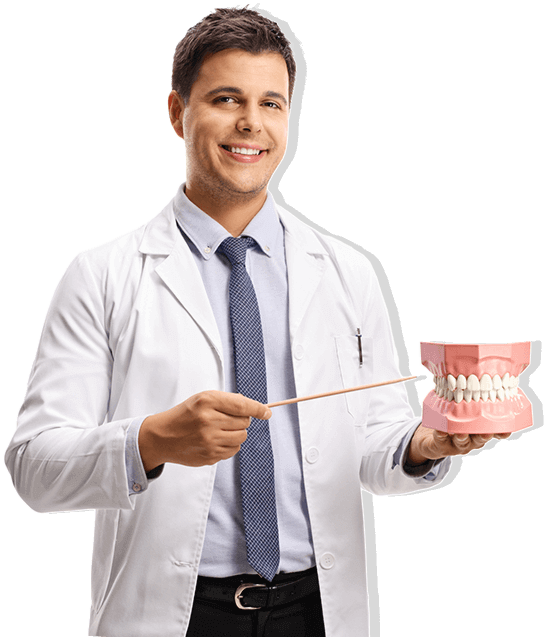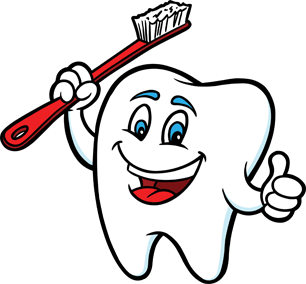Orthodontics
A beautiful smile can make you feel more confident about yourself. A proper bite also contributes to improved dental health, which can affect your overall physical health and wellbeing. Orthodontic treatment may be necessary to straighten teeth when a person’s teeth or jaw structure do not fit together properly. These problems are often referred to by orthodontists as malocclusions (or bad bites) and can cause speech difficulty, premature wear of the teeth and protective enamel, and increase the chance of injury to teeth and jaw joints. It can even make you uncomfortable smiling.
If you are wondering when to have your child’s smile evaluated by an orthodontist, the American Association of Orthodontics recommends every child be evaluated by an orthodontist by age seven, unless a specific problem is identified earlier. This is because this is the time when kids are starting to get their first adult molars which establish the back bite. However, it’s never too late to correct a smile as a growing number of our New York orthodontics patients are adults who are now taking the time to give themselves the smiles they‘ve always wanted.
We offer free consultations to all New York orthodontics patients and specialize in braces for adults and children. We’re also proud to offer Invisalign for adults and teens.
Benefits of early orthodontic treatments:
- Create facial symmetry by guiding jaw growth.
- Reduce the risk of trauma to protruding front teeth.
- Create space for incoming teeth.
- Reduce the need for tooth removal.
- Reduce treatment time.
You must keep your teeth clean! You must brush thoroughly every morning and evening as well as after lunch. Flossing every evening can help to remove plaque. After brushing, rinse your teeth with water, mouthwash, or fluoride rinse (such as ACT) to further remove debris.
Be mindful of what you eat and drink. Hard foods can break brackets off the teeth and sticky foods can dislodge wires. Avoid hard candy, nuts, caramel or taffy, sticky gum, sugary foods, soft drinks, corn on the cob, and raw carrots. Your braces are tiny, precision devices that require significant care. By not taking care of them, the well-being of your teeth and gums is at risk. Also, treatment time will increase when you damage your braces.
Help make your treatment go as smoothly as possible by taking good care of your braces.
Invisalign is a new way of straightening teeth without calling attention to them. The procedure involves wearing a series of nearly undetectable aligners instead of the traditional brackets and wires. They are made specifically to fit your lifestyle allowing you to eat, drink, brush, and floss easily. Our patients love their Invisalign aligners because they are clear and virtually undetectable on teeth. And since Invisalign is removable, you can easily take the clear aligners out for special events. For all these reasons, Invisalign treatment is also a great option for adult patients.
Your orthodontist will determine if Invisalign is appropriate for you during an examination, and if they are a match, he/she will prescribe a treatment plan and take an impression of your teeth. This impression is submitted to Invisalign, which uses 3-D computer technology to create a series of precisely customized aligners. Patients wear each set of aligners for about two weeks and, as a result, teeth move gradually week by week until you’ve achieved the intended results- straighter teeth.
Most Invisalign patients visit their orthodontists no more than those who wear braces. The length of treatment is approximately the same as well.
Learn MoreUnder bite: Condition where the lower jaw extends out, causing the lower front teeth to sit in front of the upper front teeth.
Spacing: Spacing problems may be caused by missing teeth or they may only be a cosmetic issue.
Protrusion: The appearance and function of your teeth are impacted by upper front teeth protrusion. It is characterized by the upper front of your teeth extending too far forward or the lower teeth not extending far enough forward.
Crowding: Occurs when teeth have insufficient room to erupt from the gum. Crowding can often be corrected by expansion, and many times, tooth removal can be avoided.
Cross bite: The upper teeth sit inside the lower teeth, which may cause tooth stratification and misaligned jaw growth.
Overbite: The upper front teeth extend out over the lower front teeth, sometimes causing the lower front teeth to bite into the roof of the mouth.
Open bite: The upper and lower front teeth do not overlap, impacting proper chewing. Open bites may be caused by habits such as thumb sucking or tongue thrusting.
Midlines: Dental midlines that do not match are evident when the back bite does not fit or match appropriately. This may negatively impact jaw and proper dental function.































